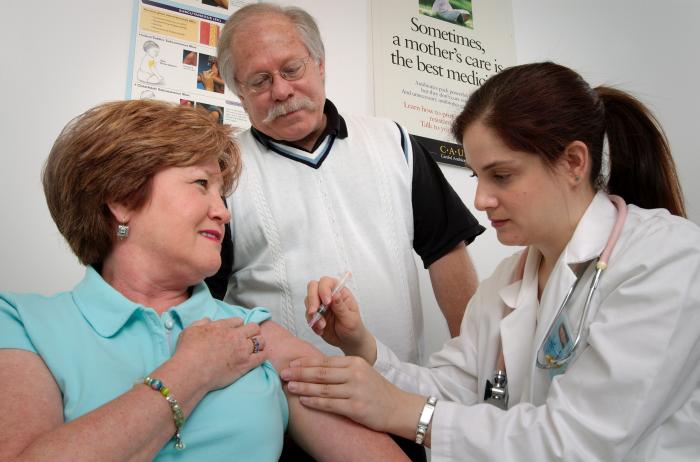 Last flu season was a rough one, mainly because the influenza A (H3) strain in the vaccine did not match the circulating A (H3) strain that was making most people sick. This season, CDC believes the strains in the vaccine will be a good match against the currently circulating strains and provide better protection.
Last flu season was a rough one, mainly because the influenza A (H3) strain in the vaccine did not match the circulating A (H3) strain that was making most people sick. This season, CDC believes the strains in the vaccine will be a good match against the currently circulating strains and provide better protection.
Although the flu vaccine is usually 50 to 60 percent effective, it is still the best way to fight the flu. Even if you do get the flu, getting the vaccine can make your illness milder and reduce the risk of serious outcomes, such as hospitalizations.
This season, there are many different types of flu vaccine available including shots, intradermal shots and nasal sprays. This season’s vaccine also comes in two different forms: trivalent (protection against 3 virus strains) and quadrivalent (protection against four virus strains). CDC does not recommend one specific flu vaccine over another, they just encourage that you get one if you’re 6 months of age or older.
Now is the time to get vaccinated as flu viruses typically begin circulating in October and November and it can take 2 weeks to develop protection after receiving the vaccine. Your body’s immunity to flu viruses also declines over time, so getting vaccinated against the flu every year is important – it is the best way to protect yourself, your family and your community against the flu.










While I appreciate the blogs on general health issues, I have noticed there haven’t been any updates about behavioral health services or issues. The blog from DBHS, which was discontinued in July, was crucial to keeping the behavioral health community–providers and members alike–informed of events, services, practices, and protocols, and uniting them in philosophy and action. It is a constant, daily challenge to reduce stigma about mental health issues and to educate people about the importance of mental health–it is just as important as physical health, and in fact, you can’t have whole health and wellbeing without it–and your inclusion of behavioral health issues in your blog would go a long way towards reinforcing that. In addition, there are some systemic issues that should be addressed by you on a regular basis, such as the RBHA transition (still many problems for providers and members), the Arizona State Hospital, and changes at AHCCCS.
As a side note, as a communications professional, I would ask that your writer consider the audience when writing your blog. Although many of your readers are highly educated, many are not, and they are the ones who will most likely benefit from the information. Sometimes the terminology used is such that only a health professional would understand it. Also, avoid acronyms. While you might think everyone knows what a specific acronym means, not everyone will, and if they don’t it will diminish their understanding of the blog.
Thank you for your consideration.
Thank you for your input on our blog. We strive to post a variety of public health topics and appreciate the range of subjects to cover. Your suggestions are noted and we look forward to incorporating these into future blog posts.